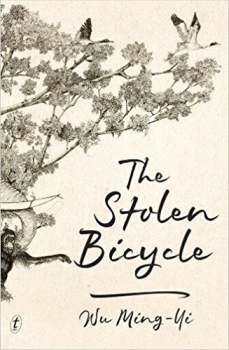Diary of a Provincial Lady
E. M. Delafield
Harper & Brothers, 1931
388 pages
I have taken 70 years to discover the delights of the Provincial Lady; pray do not make the same mistake! First and foremost, this is a funny book - not uproarious, belly-shaking-laughter kind of funny, but more a gentle-chuckle and wry-smile kind of funny. While looking for a quote to tweet out during the recent mini Persephone Readathon, I had trouble because the Provincial Lady doesn't use one-liners. Her humor is prefaced with paragraphs of setup, most well beyond Twitter's character limits. Funny stories, funny vignettes.
The book purports to be the diary of a country gentlewoman living an upper-middle-class life in 1930s England. This is not beautiful, lilting prose, but short, witty, descriptive phrases and sentences, often reminder notes to herself or philosophical questions to ponder later. Most of these asides are satirical in nature, even quite caustic at times, as she keenly and mercilessly observes her fellow man and herself.
I love that it portrays daily life in a foreign country, even if we Americans don't think of England as being particularly foreign. And I was amazed at how many words, phrases, book titles, and names of people I had to look up to find out what she was talking about! When an older book mentions domestic things like food, famous people, popular songs, and fashions, it can be difficult to follow. Many times a standard college dictionary didn't help, and I spent a lot of time Googling and searching Wikipedia for information. Ever since I was a kid, I've always had to know what every word means in a book. I'm going to create another post with my annotations to this book, so future readers can benefit from my inquisitiveness and research. I have over 70 entries in my notes!
This book proved to be very popular and she wrote 3 more diaries in the Provincial Lady series:
1. "Diary of a Provincial Lady" (1930)
2a. "The Provincial Lady Goes Further" (1932 - second book title in England)
2b. "The Provincial Lady in London" (1933 - second book title in America)
3. "The Provincial Lady in America" (1934)
4. "The Provincial Lady in Wartime" (1940)
There are books with various titles about the Provincial Lady in Russia, but according to a blog review by
I Prefer Reading, Delafield wrote that book as herself, not as a diary of the Provincial Lady.
This book was very fun to read. I felt I had spent the weekend in 1930 in England with some close friends.
Further Reading:
Persephone Prize essay contest at Persephone Books
Shortlisted: Charlotte Ford, '
The Provincial Lady's Husband'
... this essay will seek to argue that a) the Provincial Lady’s husband is actually rather lovable; b) his character supports and complements the Provincial Lady’s to their mutual benefit; and c) the Provincial Lady fully appreciates both a) and b). It will then Go Further, and argue that Robert is in fact The Perfect Husband.













